Let’s face it, if you are like any other commercial company, during the holiday season, you are going to double or even triple the amount of emails you usually send to your list members. Each year, as statistics show, your competitors and all other companies will do the same.
This interesting chart by Experian, shows clear boost in email volume, towards the end of last year:

I guess you already busy thinking of ways to make your holiday emails stand out in the crowd with clever subject lines and flashy designs. During this time of the year you will probably help your company generate much more revenue, while making you a hero in front of the eyes of your CEO.
But the downside of this is that your client’s mailboxes will be bombarded with an exceptional amount of emails in short period of time. This might result in lower Open rates, increase in Unsubscribes and Complaints and enhance the overall churn rate of your mailing list.
Let’s review a real example from one of my clients, a consumer products retailer. This chart from last year, shows significant increase in volume of promotional emails during October – December.
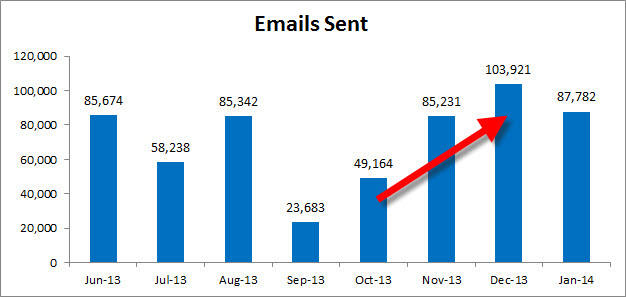
As a result of increase in volume the Open Rate actually went down:
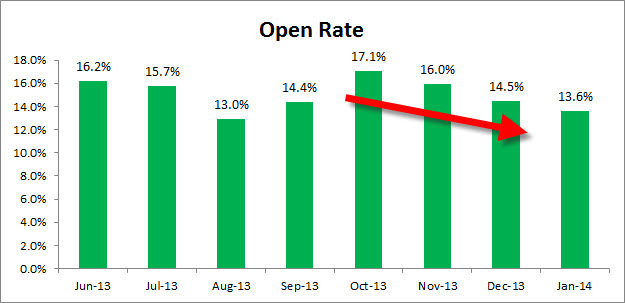
And even worse side effect was the Unsubscribe rate that almost doubled in December in comparison to October:
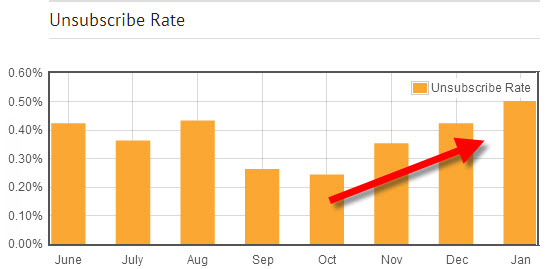
In this post I am going to cover some of the more advanced features in your ESP. You will learn techniques enabling you to fight Email Fatigue and save you from crippling the stats of your list. You work hard all year to build your email reputation, don’t let the last 2 months of the quarter ruin it.
1. A/B Testing
Let’s begin with the obvious. A/B testing is one of the most powerful tools in every Email Marketer’s arsenal. If you are not A/B testing on regular basis – you are loosing opportunity to constantly improve your campaigns results.
During the holidays season, A/B testing becomes even more important because in this period you will have an abundance of new ideas and a limited amount of time to implement them all.
You should perform tests based on 4 aspects :
A. Product and Offer
– Offering different products
– Various discount rates
– Different time limits
B. Creative
– Length of text
– Different Subject lines
– Different call to actions on buttons
C. Delivery condition
– Sending at different time of the day
– Amount of campaigns sent per day
D. Email design and layout
– Different buttons color
– Different number of offers per emails
– Different email layouts
Here’s an example of some A/B tests that can be performed on two typical promotional emails:
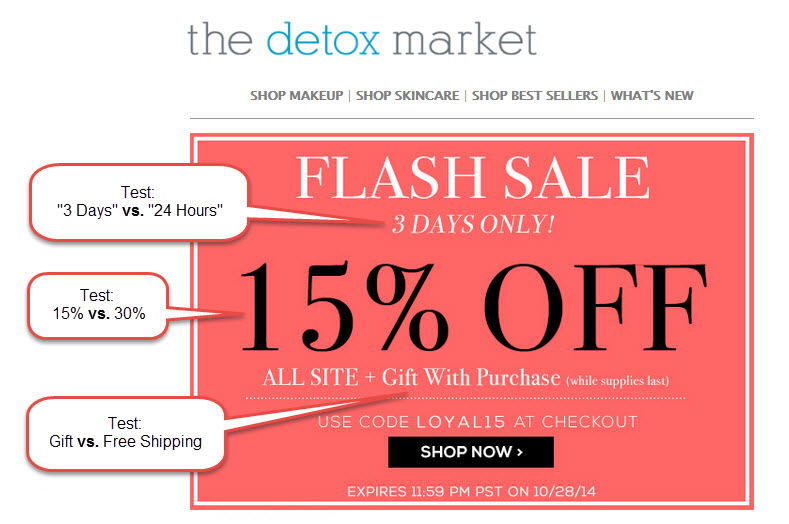
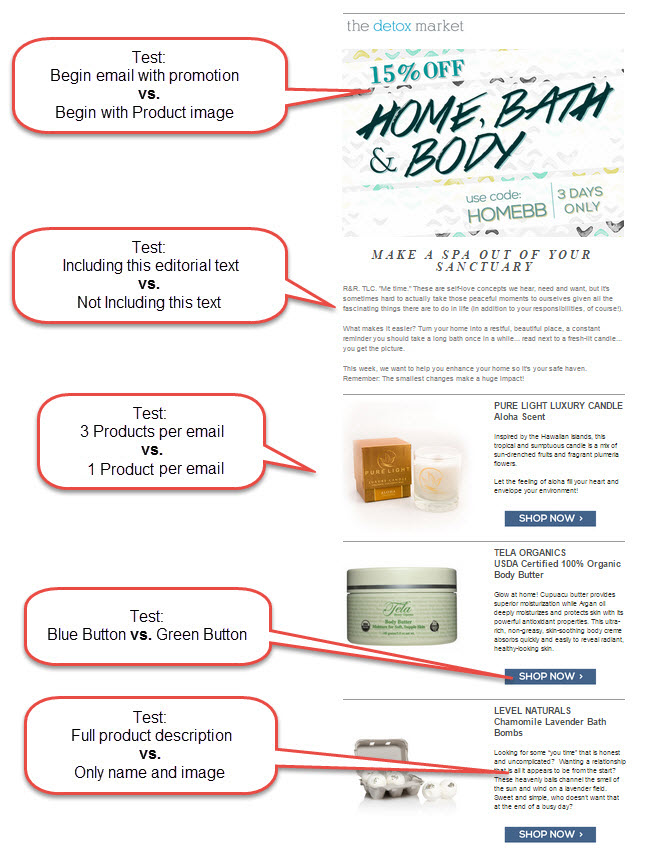
Word of advice, make sure to test only one element per test. Otherwise you will have no clear indication which of your changes caused the shift in results.
2. Segmentation
In Email Marketing, Segmentation is one of the keys to success. But, during the holiday season, segmenting your list is 10 times more important (just like survival skills during zombie apocalypse) .
Instead of sending the same campaign to your entire list you should filter your members into segments and send targeted and more relevant campaigns for each segment.
You can segment your list according to 4 data types:
A. Demographic
You can create segments based on any data field in the DB of your ESP or Marketing Automation tool, such as:
– Gender
– Age
– Geographic location
For example, if you are selling cosmetics you could create special Gender filter like in example below. This way you could send daily campaigns only for women and special campaigns targeted only for men – suggesting them to buy a gift for their spouse.

B. Email activity
Segment your recipients by how they interacted with your previous campaigns:
– Opened/Not Opened any of previous campaigns in last X days
– Clicked/Not Clicked on any of previous campaigns in last X days
Example for Activity filters:

Use email activity to create segment of your most engaged members and send them extra emails. On the contrary use it to filter out members who stopped interacting with your emails long time ago and exclude them from holiday special campaigns, to prevent them damage your sender reputation.
Here is an example for smart segment that target members who open you emails but don’t actually click on them:
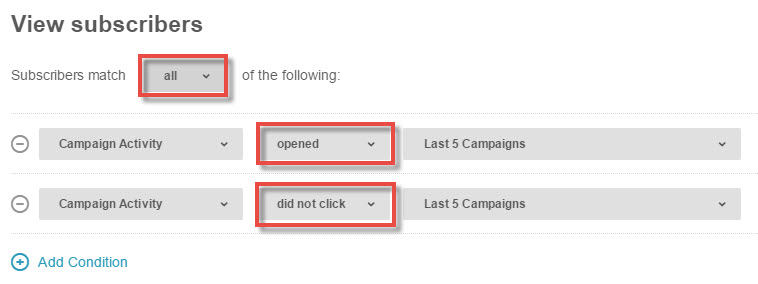
These might be customers who love your brand but not impressed by the offers. I would send them a special discount email to help them to convert.
C. Purchases history
Segment according to previous purchases data in your back office or CRM.
Identify your heavy and loyal shoppers and send them special and rewarding campaigns.
Send similar products to previous purchases, for example if a customer purchased any of the new smart watches, send him special email with gadgets.
D. Last year activity
Many ESPs keep email activity data for limited amount of time but if you are lucky enough to have data from last year holiday season, you could use it for your advantage.
Find recipients who interacted the most with your last year campaigns and make sure they would be the first to receive this year special holiday offers.
There is no limit for amount of segments you can create, or for how small and specific each segment can be. You should always keep testing and look for new and better ways to slice your audience.
3. List splitting
In some cases, your ESP might not have built-in A/B testing or Segmentation features. In other cases your list simply consists of emails addresses and names so you don’t have enough demographic data to create segments.
Luckily some ESPs allows you to slice your main list into random equally sized parts. Sending campaign in parts, actually has some advantage over sending to entire list at once. It will allow you to analyse result and make quick adjustments before mailing to the next batch.
If your ESP does not allow random splitting of lists, you could split using “dumb” filters like in example below, which will create 2 completely random chunks from your list.


If your ESP doesn’t have filtering nor Segmenting options (True story) you can still export the entire list to CSV file – edit and segment the list in Excel and then import each segment as standalone list.
4. Preference Center
I was never big fan of “one click” unsubscribe buttons. In my opinion, the recipient should have the option to choose if he wants completely opt-out from your list or opt-down and start getting less emails from you.
If your email footer doesn’t yet have link to email preference you should consider adding one, the sooner the better.
Many popular ESPs have built email preference link to include in your emails. Or you can go for the more advanced option and created email preference page on your website.
For example, GoDaddy allows you to choose which types of emails you want to keep receiving:
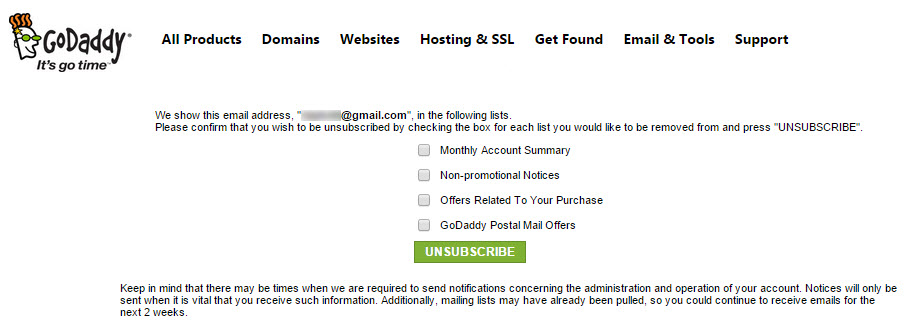
In other example MightyDeals allow you to choose the frequency of the promotional emails:
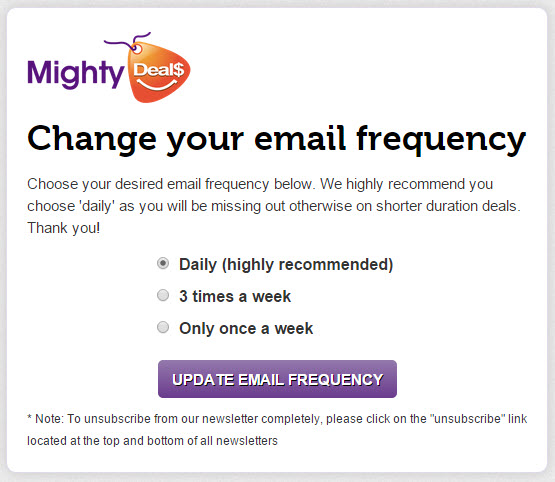
Having an email preference page will give your recipients more control, tell them that they are in charge, and allow them to choose how often to be contacted. It will allow you save valuable members who otherwise will be automatically unsubscribed and lost forever.
5. Throttling
Constant volume is one of the main factors that ISP filters are checking for each sender. A sudden spike in volume can alarm the spam filter and send you emails to the Spam folder.
One of the less known features in Email Marketing is Throttling. Email Throttling enables you to limit the amount of emails sent from your account or SMTP during certain period of time.
For example , this ESP allows you to limit the amount of emails being sent out each hour:
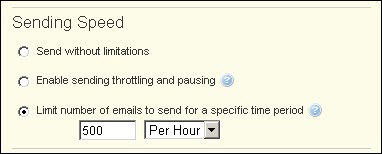
Since you’re probably going to double or triple the amount of emails you send during the holidays, you should consider using Throttling. It will allow you to avoid spikes by spreading your email volume over a longer period of time.
If your ESP doesn’t support throttling, you can manually schedule your campaigns over the entire day, instead of sending them all at once.
6. Frequency capping
Frequency capping is yet another advanced feature that allows you to limit the amount of emails that any recipient will receive during a given period of time.
During the holidays your recipients are probably going to receive daily emails from you. In some cases, even several campaigns each day. On top of that you will be busy A/B Testing along with sending experimental campaigns. There is a good chance that in the “heat of battle” you will accidentally target segment and members you didn’t intend to include.
Getting too much campaigns in a short of period of time may annoy even your most loyal customers, and they will be much more easy on the “unsubscribe” button.
To prevent this you can use a Frequency Capping which acts as safety trigger – if the specific recipient already reached his promotional emails limit for that day he or she won’t receive additional campaign even if they included in the segment.

If your your ESP does not support frequency capping try to be creative with your Email activity filter like the example below:

7. Purge list
This name of this feature varies by ESP, but what it mean is to have a constant list of members who will be automatically excluded from any campaign you send.
Consider it as a “black list” to which you add emails of your competitors, banned customers or people who specifically asked to be removed from your mailing list.
For example, CampaignMonitor, one of the many popular ESPs has option to exclude subscribers from each campaign.
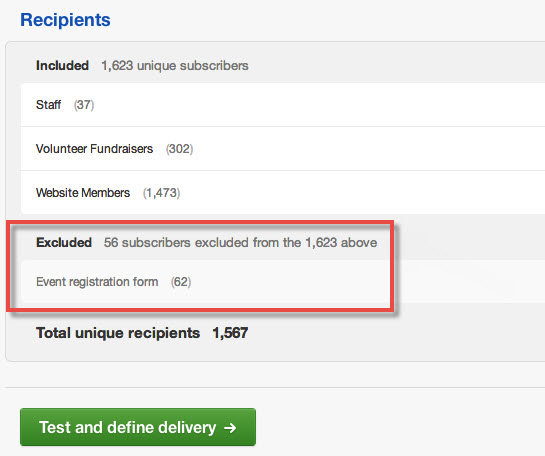
Obviously, if you continue to send emails to members who unsubscribed or clicked the “spam” button, it will have negative effect on your reputation (and may even cause you IP address to get blacklisted ). But you should know that it’s not good idea to delete members from your account even if the unsubscribed or submitted spam complaint.
By deleting the member completely from your account together with their sending history you are risking to mail them again in the future, by importing outdated members data into your account.
During the holiday season you are most likely to get new spam complaints and requests from your ESP account manager to remove certain member from your list. Having a Purge List will assure that these members won’t get any more emails from you and thus keep your Sender Reputation safe in this critical period.
If your ESP doesn’t have Purge List feature, simply create a special segment called “NEVER_SEND” and remember to add it as excluded segment for every campaign you send.
In conclusion
Using the features in this list will help you maximize your revenue while keeping the churn rate to minimum. If you are not sure how to use any of the features above or if they available in you ESP, you should contact your ESP support or account manager.
Help your company to save it’s mailing list and preserve the sender reputation. As marketers it’s our job to be opportunistic but also have long-term vision. If you want your recipients to stay with you long after the holiday season is over, the best thing you can do is to play smart and treat them with respect.
